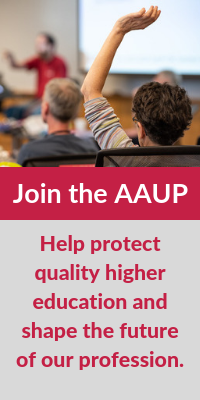- About
- Programs
- Resources
- For AFT Higher Ed Members
- Academic Freedom
- Shared Governance
- Political Interference in Higher Ed
- Racial Justice
- Diversity in Higher Ed
- Responding to Financial Crisis
- Privatization and OPMs
- COVID-19 Pandemic
- Contingent Faculty Positions
- Tenure
- Workplace Issues
- Gender and Sexuality in Higher Ed
- Targeted Harassment
- Intellectual Property & Copyright
- Free Speech on Campus
- Civility
- Publications
- Data
- News
- Membership
- Chapters
Next Steps for the New Deal for Higher Ed
Last Friday, the US House of Representatives introduced a pared-down version of the Build Back Better Act, a more than $1 trillion bipartisan infrastructure bill which carries a host of critically needed investments in universal preschool, and climate resiliency. Unfortunately, despite the efforts and input of so many of our members, most of the new investments in higher education were cut from the legislation in last minute negotiations.
It goes without saying that we are disappointed in these developments. The Build Back Better Act funds essential financial aid programs, but fails to deliver on the reforms we need. The provisions in the original Build Back Better Act would have been a fundamental and transformative reset to how public higher education is funded. For decades, and particularly during the Great Recession, we’ve watched as states slashed funding to colleges and universities. Administrators doubled down on austerity plans, chased corporate sponsorship and Wall Street financing, and relied ever more on underpaid contingent workers to keep campuses running. Meanwhile, federal student aid failed to keep pace with rising tuition costs. All these trends are unsustainable, and the pandemic only served to accelerate them. We launched the effort to secure a New Deal for Higher Education to ensure stable and sustainable investment in our institutions and their workers, and to serve the public good.
We were enthusiastic and supportive of the original plan for a federal-state partnership, intended to reverse the trends of disinvestment. In this new version of the Build Back Better Act, we’re pleased to see a significant increase in Pell Grants, new investments at minority-serving institutions, and a new competitive grant program to improve student retention and completion rates, but we also know that these programs will send more money into a broken financial aid system in desperate need of reform. We will be working toward getting Congress to move a reformed funding model forward in some fashion in the coming years. If you took action on this critical bill, by sending a letter to your member of Congress, calling them, or even meeting with their staff, thank you for your activism.
Right now, with the 2022 elections on the horizon, we know what we need to do: build consensus among current and future lawmakers on the need for reforms to promote shared governance and address the contingency crisis, in addition to more funding for our institutions and students. We need to keep organizing and bringing our colleagues into this movement to fundamentally change higher education.
This is just the beginning and we will continue fighting as hard as we can for a New Deal for Higher Education. Now is the time to join us for the next stages of this ambitious campaign, including putting pressure on President Biden to offer debt relief to student loan borrowers. Sign up for our New Deal list now to be in the loop on next steps.
In solidarity,
Irene Mulvey, AAUP President
Publication Date:
Monday, November 8, 2021


